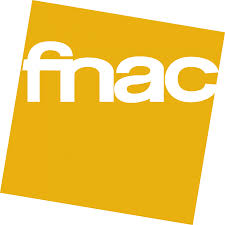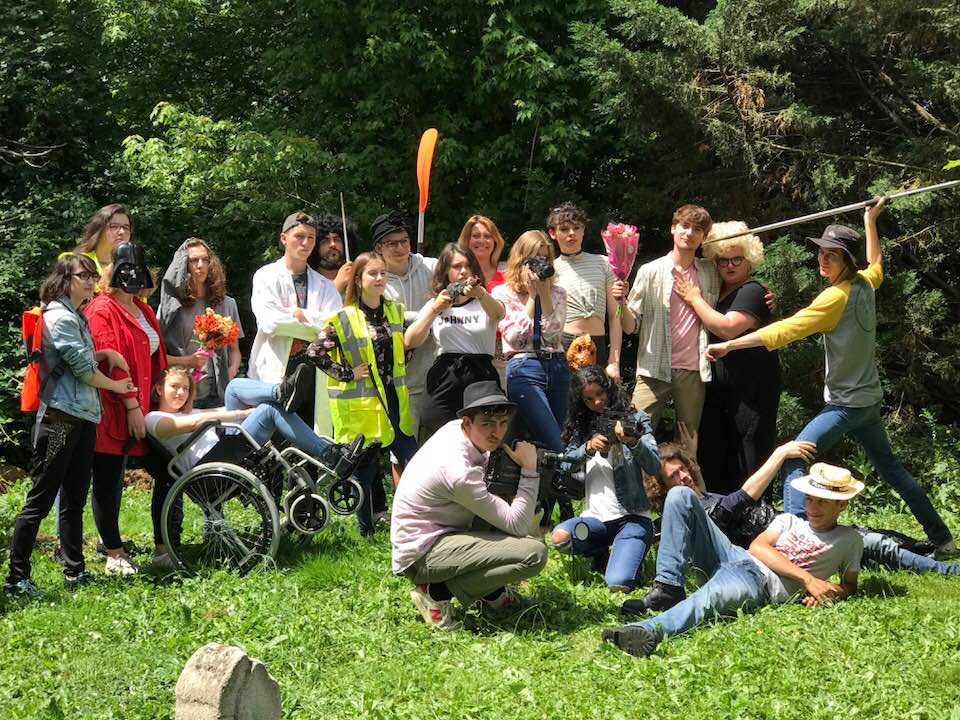lesson 4
In front of the building
- Who can we see in this shot? What are the characters doing?
Thornhill and his secretary exit the building. They are walking towards us in the street through the crowd.
Can you describe the camera movement?
We have a backward tracking shot that shows them walking towards us through the crowd. It creates a feeling of tension within the audience. We are in the rush with them… Thornhill is always in motion (en movement) and multitask : he dictates a letter, a telegram, while he walks.
2. Who Thornhill wanted to write and why? What can we understand about the main character traits of Thornhill? What is his feeling about people and about him?
Thornhill is dictating a letter to his secretary which will be sent to a woman. He seems to be a ladies’s man, a charmer who seduces wo(i)men with words and delicate attentions. He wants to send a box of chocolates In gold wrapping (papier / wrapping paper = papier cadeau) to this woman to make her believe she is in fact eating gold. He appears to know how to manipulate people in finding their weaknesses (faiblesses) and playing u(e)pon them.
It is clear (evident) that Thornhill thinks he can say whatever he wants to people and that they will believe anything. He takes people for idiots. He thinks that he is the strongest, the best. He has a strong sense of superiority. He manipulates others through words. He is a publicist, isn’t he? So he abuses people who are unsure of themselves (qui manquent d’assurance). He is rather condescending towards people, he has little (peu de ) respect for others.
3. Then, they take a taxi, why?
They take a taxi because Maggie says she is tired.
4. Is it very important for Thornhill to learn that Maggie is tired?
No it isn’t. When Maggie says she is ti(r)ed, Thornhill doesn’t care, he isn’t interested in the reason why she is ti(r)ed, he just, simply, invents one.
She may be tired because she works too hard for him but this reason would never o(e)cc(k)u(e)r to him.
6. So they take a taxi. What about the camera at the same time?
The camera changes its position and goes behind the characters, this de(a)monstrates that the characters are moving too fast even for the camera and the camera crew (équipe). This is a recu(e)rring theme and sensation throughout the film.
7. And what about Thornhill ? What is he doing?
Thornhill jumps the queue, pushes a man out of the way and he lies that his secretary is very i(e)ll and needs to take the taxi (cab USA). This confirms our suppositions about this character. He ‘s got a nerve, he is (t)cheeky (culotté).
8. Where are the characters next and what sort of shot is used?
In the next shot we are in the taxi with the characters in a waist (taille) shot.
9. Why does Maggie seem to be worried?
Maggie is worried that the man knows that Thornhill was lying. Thornhill doesn’t think he has done wrong, he is convinced that the man believed him and thinks that this man is happy to do them this favour (service). He has blinkers on (il a des oeillères), he refuses to see the reality, he lives in his own world.
10.And Thornhill what is he doing?
He always multitasks, he reads the newspaper, he dictates his schedule to Maggie (emploi du temps), he notices he has put on weight, he is continually on the move as the background image of the everyday traffic shows us.
11. In your opinion How has this scene been created?
This scene was shot in a studio with the traffic projection in the background behind the car / the characters.
The scene in the hotel bar…
- How is Thornhill behaving in this scene? Can you describe the behaviour of Thornhill?
Even though there are three men opposite him, watching him, waiting for him, he is still preoccupied by his own personal futile problems which concerns his relationship with his mother. He is agitated, he is constantly looking at his watch (checking (vérifier) the time). He comes across in this scene (il semble, il a l’air) as a young boy, somebody who is immature, who has been badly or poorly, educated [agicated].
2.What happens to Thornhill in this scene?
Thornhill is kidnapped in this scene.
3. And why ? Why is he kidnapped?
It seems that the kidnappers have made a mistake. They confuse him with a man whose name is Kaplan. This is because when the waiter, the server, the groomsman, calls “Mr. Kaplan”, Thornhill raises his hand (puts his hand up) in order to send a telegram or to use the telephone. The gangsters who we can see in the background therefore mistake Thornhill for Kaplan.
No we don’t. We see them in a previous shot in the background. Hitchcock uses this effect to create a feeling of tension within the audience. The spectators who see the gangsters before Thornhill, fear [féai] for him. Hitchcock often uses this technique of increasing anxiety in the audience even before the dramatic event takes place / happens.
5. What camera movement is used to introduce the gangsters into the scene? Is this movement realistic? What register does Hitchcock introduce?
Hitchcock uses here a panoramic shot from left to right and then a forward tracking shot. We get closer to the gangsters who become more intimidating the closer we get. It’s an unrealistic shot. Hitchcock doesn’t want to make realistic films instead he prefers to represent our fears, fantasies, and nightmares.
6. What happens to Thornhill as he leaves the dining room?
As Thornhill leaves the dining room we see an anonymous hand touch his shoulder stopping him. This anonymous hand which enters the scene from the right, increases anxiety within the audience, even though we have just seen the gangsters in the previous shot. Often in films, danger comes from the right. This is because one (people) reads from left to right, so, good things enter the scene on the left, and bad unexpected things enter from the right.
In conclusion we can say that Thornhill who was very sure of himself, and thought of himself as untouchable has in fact become a victim, has in fact lost control.
Hitchcock always uses this technique of revealing the danger to the audience before the characters in the film become aware of it.
This is not surprising. Thronhill is mistaken for Kaplan.
Despite his casual approach to life he now has fallen into a serious and dangerous situation. The little boy he is, has to become an adult now. He has been thrown (jeté) into maturity / into an initiation (anychiation) of adulthood.









